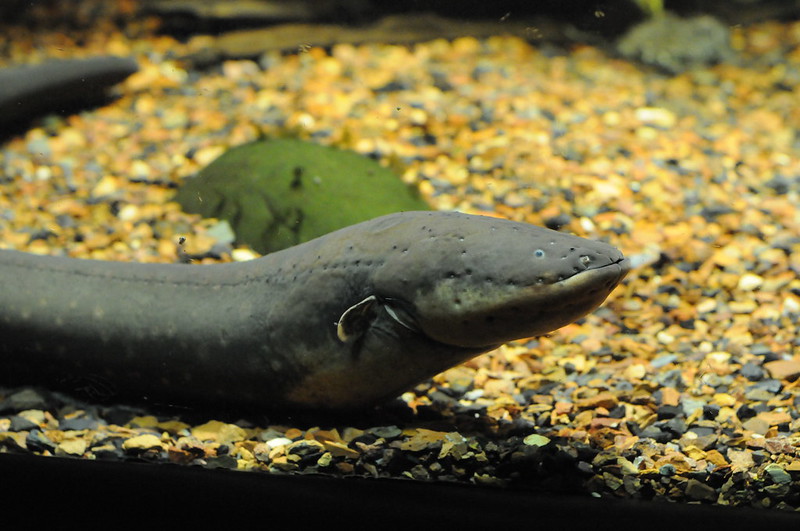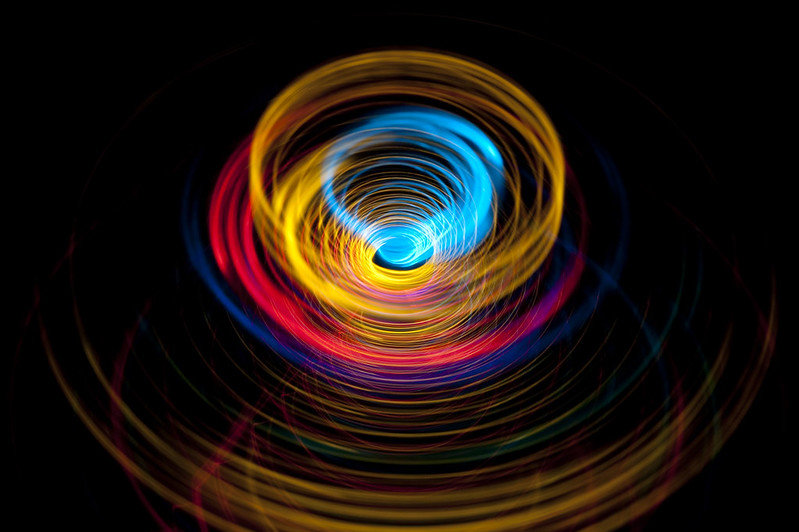Many meditation traditions involve developing our awareness of what is going on around us. Part of that work involves opening up to more fully experiencing the richness of sensation. But, even as our practice matures, and our awareness of the world deepens, even in that moment we are still surrounded by an invisible world, beyond our senses.
As I noted in an earlier post, our perceptions of the world seem direct, and unquestionable. In fact, though, our brains must do a lot of work to make an accurate guess about what the physical world is like. The gap between our perception and the physical world is something that we can easily demonstrate with visual illusions, where we find our perception is out of alignment with the physical world.
While the idea that our perception may skewed is easy to demonstrate, we may not appreciate that from the very first steps, our experience of the world is also very limited. At a fundamental level, our brains must do a considerable amount of work in order to gather information about the world, using our senses.
And, since gathering information is costly (in terms of developing and maintaining each sensory system), our senses are focused on finding the information that is most useful to us, not on representing the entirety of reality. So, while it may seem as if we have access to the entire world, what we can experience is really only a sliver of the reality that surrounds us in each moment.
What information is it that our brains focus on? Each of is probably familiar with our senses of sight, sound, smell, taste, and touch. To these, we should also add our vestibular sense (our sense of balance, and the ability to detect when our body starts moving or rotating), and proprioception (our sense of where our body is in space).
We often miss our vestibular and proprioceptive systems when we talk about sensation, probably because they often operate outside of our awareness. We may not even notice them until they are disrupted (think of getting dizzy after a carnival ride, or if you have ever experienced bouts of vertigo). Together, these senses represent the range of information that is available to us, through our direct experience, in each moment.
The challenge for each of our senses is to take some stimulus in the world (the chemicals that make up an odor, the waves of pressure that make up sound), and convert those stimuli into the language of the brain. Changes in the electrical potential across the membranes of the sensory receptors, which drive the release of chemical signals (neurotransmitters) that hand the signal off to the next step along the path to the brain. Research on the neuroscience of sensation has made great advances in our understanding of the intricacies and activity of our major sensory systems. Today we can describe in very fine detail the major steps that go into each of our sensory experiences.
For example, this fall, the 2021 Nobel Prize in Medicine recognized the work of Dr. Ardem Patapoutian and Dr. David Julius on the neuroscience of sensation. Specifically, the prize was awarded for Dr. Patapoutian’s work on proteins that are critical for our sense of touch, and Dr. Julius’ work on the proteins that allow us to detect heat, cold, and pain (and, which are targeted by the chemicals in chili peppers, making them spicy).
The work by Drs. Julius and Patapoutian represent important advances in our understanding of the very first steps of sensation: taking some information from the world (light, vibrations, sound, flavor) and converting that information into the language of the brain. Research in this area has greatly advanced our understanding of how our brains are able to “touch” the world around us, by recoding physical stimuli in neural signals. The proteins that Drs. Julius and Patapoutian have characterized are a key step in this process. Having a protein that can start the process of turning heat into a change in the electrical potential of a neuron is the first step in building a window into the world around us. And without these proteins, we would be deeply anesthetized, unable to feel physical contact with much of the world.
And, research across our sensory systems has also demonstrated the limits of our sensation. We can only directly experience stimuli for which we have receptors. And even then, only for stimuli that fall in their working range.
So, as we look closely at our sensory systems, we find that our direct experience of the world is limited in two major ways: 1) in the range of information we can detect, and 2) in the kinds of information that we can detect.

For the first point, consider vision. Most humans with normal vision can see a rich range of colors. (And, even humans with color vision deficiencies (often referred to as color-blindness) can distinguish a wide range of colors).
Color is our direct, personal experience of the wavelengths of light around us. What we typically refer to as light is technically visible light. For most humans, visible light is made up of electromagnetic radiation (photons) which have wavelengths that fall in a range from about 400 nm (violet) to just over 700 nm (red), stretching from violet to red. Any color that we can perceive is a representation of the wavelengths (or mixtures of wavelengths) of light that are entering our eyes at the moment.
But, what lies outside of this range, and outside of our vision? Photons with shorter wavelengths we call ultraviolet (UV) light and gamma rays, while photons with longer wavelengths make up infrared light, microwaves and radio waves. Think about that for a moment. Radio waves, gamma rays, and the calmest color of green we have ever experienced. All are in reality photons, and the only important difference between them is their wavelength.
At this moment, some of those other photons, for instance UV and infrared photos, are all around you. Some are passing into your own eyes. And yet, most likely, you can’t see those photons in the UV spectrum, or infrared light. But, why not? Is it impossible to do so?
Of course not: we can easily “see” UV and infrared light by using special tools (think of infrared (IR) cameras, which allow us to image heat, or see in the dark, when there is little visible light).
And, other animals have visual systems that detect UV or infrared light. Bees, for instance, have a visual system that is sensitive to a range of wavelengths that is similar to humans, but shifted to shorter wavelengths, including the ultraviolet range. Many flowers have evolved to have striking UV patterns which serve as cues for pollinating insects like bees, so the experience of a flower is very different for bees and humans, even from the very first step. So, beauty truly is in the eye of the beholder (or at least starts there).

Outside of vision, this point holds as a general truth: that what we can perceive is only a fraction of what exists around us at any moment. Consider sounds that are very low, or very high in pitch (beyond our hearing), textures too fine for our fingers to catch, and odors too faint for us to detect. All of these exist in the world, right here and now, just beyond what we are experiencing.
On the second point I raised above, we are not only limited in the range of our experience, but also in the very kinds of sensations we can experience. There are qualities of the physical world that we can demonstrate exist, but which we cannot feel directly. Other animals can, though. For instance, numerous species have developed receptors that allow them to detect types of stimuli that humans do not experience directly, such as magnetic fields, the polarization of light, or electric fields (usually by animals such as fish, living in the water).
In each case, these species of animals have developed proteins that can detect stimuli in the world, and sensory systems that represent that information in a useful way. This allows these animals to directly experience physical stimuli in the environment to which we ourselves are blind. Birds use magnetic fields for navigation, similar to our use of a compass. Some fish have a passive electrical sense, that allows them to feel electrical fields in the water, while others actively generate electrical fields that allow them to feel objects in the water. While we sometimes think of these electric fields as weapons (in the case of electric eels), more often the electric sense is used to feel what is in the water in conditions where vision is ineffective.

So when we look closely at what we can bring into our awareness of the world, we find that humility is always warranted. Right now, in this moment, there is more to the world than what we can experience directly. That invisible world lies beyond our senses, beyond what we can ever experience directly. To reflect deeply on this is important, lest we become overconfident. We cannot hold the entirety of this moment of the world in our perception.
But along with humility, gratitude is also warranted. While our experience is only a sliver of reality, life is so bountiful that even a drop has depths that we cannot exhaust.
